1 Insect Diversity
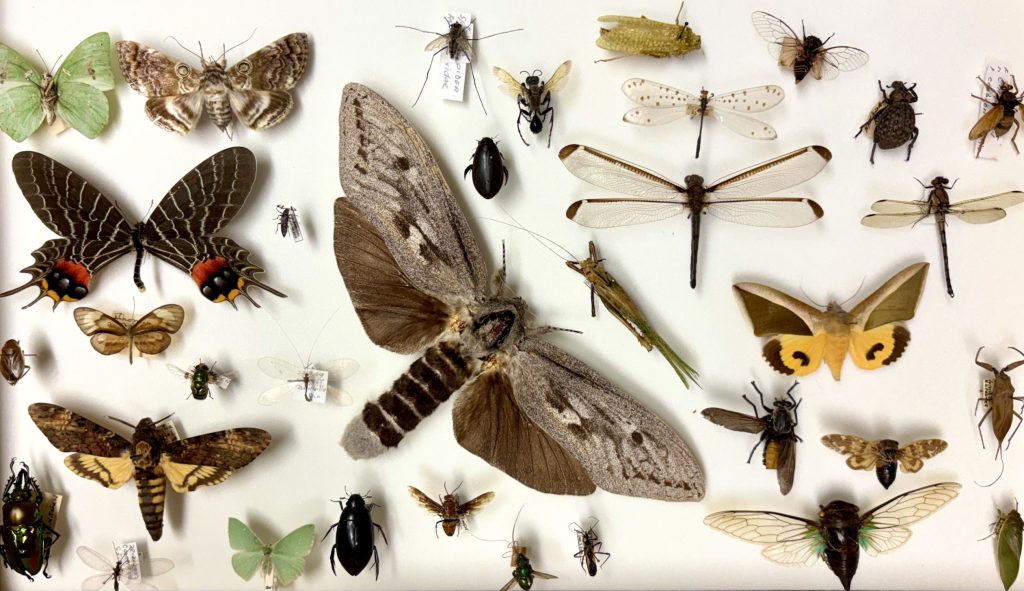
Insects are regarded as one of the most successful taxa on the planet. Here, we examine what we mean by success and we outline some of the attributes of insects that have led to their success. These attributes include an ability to adapt to extreme habitats, the evolution of diverse feeding habits and the development of wings.
Learning Objectives
- Overview the evolutionary origins and importance of insects
- Understand the contribution of varied feeding habits to the abundance and diversity of insects
- Begin to recognise the orders of insects
What is Entomology?
Entomology is the study of insects. Insects are a large and diverse taxon; consequently, entomology can cover all disciplines of biology such as evolution, classification, ecology, anatomy, behaviour, neurobiology, biochemistry, genetics and physiology. Insects are ideal model organisms for studying all these aspects of biology. This course provides the foundation for more advanced entomological studies by allowing you to become familiar with the basic classification, anatomy and general biology of the major insect groups, called orders.
THRD0023 003 (YouTube, 3m 52s):
First we need to define precisely what groups of animals we will cover in this course. Traditionally, entomologists are expected to be somewhat familiar with related groups such as spiders, mites, scorpions and other terrestrial arthropods because they have similar roles as beneficial and detrimental organisms.
We will restrict ourselves to the hexapods, which includes the insects and the non-insect hexapods.
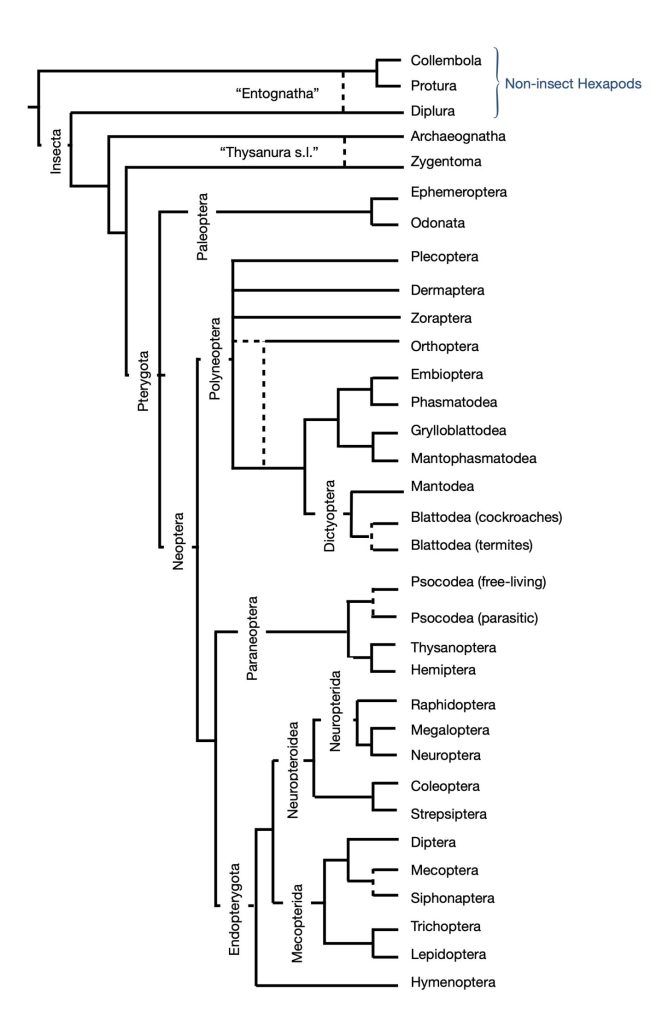
Where did insects come from?
In recent years, the phylogenetic relationships of the arthropods and related groups has come under scrutiny, mainly because of the powerful inferences that can be made using gene sequence data. Some of the older assumptions about the relationships between insects and their arthropod relatives have been turned upside down.
Older textbooks do not reflect our current knowledge so beware! The diagram in your textbook shows one likely phylogenetic relationship of arthropods. The conclusion based on genetic relatedness and the fossil record is that arthropods have invaded land several times in the past. At least four lineages of arthropods invaded land at different times; they are the arachnids, myriapods, terrestrial crustaceans and, of course, the hexapods.
The evolutionary shift from aquatic to terrestrial habitats posed huge challenges to these lineages. The qualities of the cuticle had to change to preserve water and maintain an appropriate salt balance, the mating systems were challenged with keeping sperm and eggs alive and preventing egg dehydration, the visual and sensory systems were challenged with developing new sensory modalities such as terrestrial vision and olfaction to detect vapours.
While this course concentrates on insects and relates their current diversity to their ability to meet these challenges, at places we will examine comparable adaptations in the other terrestrial arthropods because they appear to have evolved quite similar solutions to the challenge of terrestrialisation.

Just how many insects are there
THRD0023 004 (YouTube, 2m 36s):
Insects are a dominant life form on our planet, consequently they are seen as a successful taxon. But it is worthwhile examining exactly what we mean when we compare taxa and indicate that some are successful while others are less so. We could use a numerical approach; numerically, 70–85% of all animal species are insects. At the moment, there are an estimated 1,500,000 known species, with perhaps 3–4 million undescribed species. We could use an ecological approach; ecologically, insects are present and play important roles in diverse terrestrial habitats. Geographically, they have managed to spread throughout the world, being found in some of the planet’s most extreme habitats.
Some features that promote their success are:
- Small size allows specialisation to a range of niches
- High species diversity is possible in a small area.
- Co-evolution of insects with plants and animals and their products: as plants and animals diversify, their associated insects do so as well.
- Specialisation to one habitat opens up the possibility of exploiting similar habitats. Host switching followed by specialisation to the new host is common.
- Rapid generation times allow exploitation of ephemeral (short-lived) resources.
- Flight allows geographic dispersal and migration.
- Restriction of wings to the adult stage means adults are the dispersal and mating stage; larvae can inhabit quite different environments to the adult, i.e. wings don’t get in the way.
Evolutionary success
THRD0023 005 (YouTube, 6m 11s):
Frequently and throughout this book, you’ll come across language which describes evolution. We consider selection pressures, often environmental conditions or resources, which impact heritable traits in organisms – from their physical, to their chemical or even their behavioural traits. In this way, organisms like insects respond to these changes in their environment and adapt and eventually evolve. This often results in a more fit for purpose body plan and physiology, but in many cases can also drive two or more populations of the same organism far apart enough that they become two species. Importantly, this process is iterative and is underpinned by the ability of the animal to pass advantageous genetic information from one generation to the next – which also implies that evolution takes time. But insects are so successful because for most of them this generation time is short. Having a short generation time allows organisms like insects to exploit ephemeral resources and reproduce quickly. In other words, your opportunity to pass on advantageous traits occurs more frequently thus expediting your ability to overcome selection pressures.
Ecological and geographical success
THRD0023 006 (YouTube, 3m 38s):
Insects can be found in nearly every habitat:
- Terrestrial: insects are found in virtually all terrestrial habitats
- Freshwater: virtually all freshwater habitats, especially immature stages
- Marine: relatively scarce in marine habitats
- Suburban and urban areas
“Extreme” habitats are those that tend to have relatively few species present because conditions are beyond what is normally encountered. Obviously, organisms that live in “extreme” habitats find them quite normal.
Examples of extreme habitats
- deep caves
- hot springs
- snow-covered landscapes
- salt lakes
- crude petroleum pools
- arid deserts
Caves
Australia has a diverse cave fauna. Caves are generally nutrient-poor and biomass is low. Nevertheless, some species have adapted to the constant darkness of caves. Beetles are especially prominent amongst the cave fauna. Frequently, cave-adapted insects lose their pigmentation, lose or have reduced eyes, and evolve long appendages to increase their tactile sensitivity. These characteristics are called troglomorphisms.
Remarkably, a previously unknown ecosystem in desert aquifers of Western Australia has been discovered in the last 20-25 years. The aquifers are composed of cracks and crevices deep underground below the western Australian deserts. A great diversity of diving beetle species is found in the aquifers.
Keen to know more?
Read more about some very interesting cave-dwelling insects:
Hot springs
A fly called the alkali fly or brine fly (Diptera: Ephydridae) is associated with geothermal hot springs at Yellowstone National Park in North America. The female lays eggs on mats of thermophilic (heat-loving) bacteria. The larvae burrow into the bacterial mats to feed. The adult flies can live at a maximum of 43°C and can withstand higher temperatures for short periods.
Keen to know more?
Read about some very cool extremophiles:

Freezing temperatures
A species of scorpion fly (Mecoptera) inhabits snowfields in winter. Adults are long-legged and wingless (called apterous). The female digs into snow to lay eggs. Larvae are found in the summer in mouse burrows, underground wasp nests or rich organic soil.
A wingless chironomid midge, Belgica antarctica (Diptera) is found in Antarctica, but its range is limited to the northern Antarctic Peninsula. The larvae can tolerate dehydration and freezing. Many insects exposed to extreme cold possess an antifreeze in their haemolymph (the insects’ equivalent of blood or circulatory fluid).
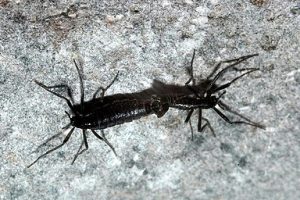
Diversity of Feeding Strategies
Scavenging
Scavengers that feed on dead animals are usually beetles (Coleoptera) or flies (Diptera). When a corpse becomes available, the flies are the first to lay eggs. The larvae develop very quickly. The metabolic activity of a mass of maggots can elevate the temperature of the corpse, increasing the developmental rate even further. Some flies have even evolved the habit of depositing live larvae rather than laying eggs, known as vivipary, or the depositing eggs that hatch immediately, called ovovivipary. The flies are at an advantage where the corpse is fresh and moist, however once it begins to dry out and most of the flesh has been consumed, the beetles take over. This progression of fly and beetle species is used in forensic entomology to help estimate the time of death.
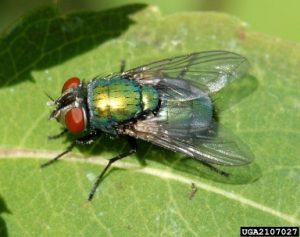
Plant-feeding
Insects that feed on plants are extremely diverse. The simplest feeding strategy is to subsist on leaves, for example, many caterpillars use this approach. Plants have evolved defensive chemicals and structures to make their leaves unpalatable or unaccessible, so the ongoing “arms race” between insects and plants has shaped many adaptations in both plants and insects to overcome each others’ evolutionary solutions.
Insects may induce galls in plant tissue, they may feed inside the stems and trunks or specialise on fruits or flowers. Some insect-plant interactions are mutually beneficial, for example, plants produce nectar to induce insects to feed and transport pollen.
Predation
Predators use many different strategies:
- Sit and wait, e.g. antlion larva (Neuroptera)
- Sit and lure, e.g. glowworm larva (Diptera)
- Stalking
- Pursuing
- Ambushing
More often than not, predators have special adaptations that suit their predatory style, for example, the highly modified “raptorial” legs of the preying mantis.
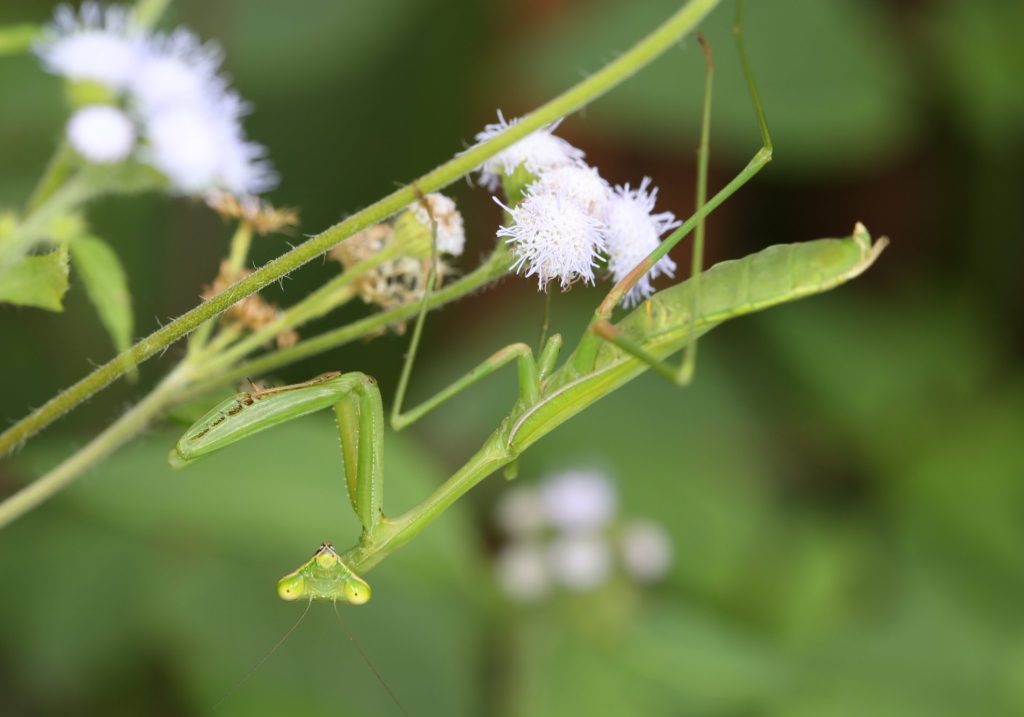
Parasitoids
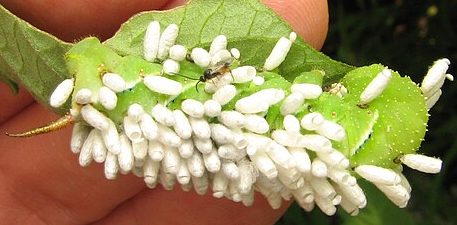
Parasitoids are parasites that kill their prey. They are distinguished from predators by the fact that predators attack and consume a host, or part of a host. Parasitoids deposit an egg or larva on or inside the host. They eventually kill the host. Wasps (Hymenoptera) are the most common parasitoids. Some groups of wasps are specialist parasitoids and they have undergone a large diversification of species because of their specialisation on different host species.
Parasitoids are important biocontrol agents. Natural populations can control pest populations, or they can be augmented by commercial rearing and release. A benefit of using parasitoids is that they tend to have a narrow host range, so that selection of the correct parasitoid means that beneficial insects are not affected by the parasitoid.
Out of interest, go to the webpage of the company Bugs for Bugs–a company that rears and sells biocontrol agents. Examine their page “Biological Control”.
Parasites
A parasite is defined as an animal that has a long-term association with its host but does not kill its host. Parasites of vertebrates do not comprise a very large group of insect species but they have enormous impact on human and animal health.
Insects can be vectors (carriers) of disease such as malaria, arboviruses (short for arthropod-borne viruses), eg. mosquitoes carry malaria and and fleas (Siphonaptera) carry plague.
Insect venoms, especially from honeybees, kill many people every year. People commonly develop allergies to venoms meaning that allergic reactions kill more people than envenomation.
Some insects are capable of becoming internal parasites, although this is a relatively rare phenomenon that is a more significant veterinary than medical problem. Botflies lay eggs on their mammalian hosts that develop as larvae under the skin. There is a human botfly in south and central America that affects the local people. Travellers to those regions can return to their home country and bring the resident larva back with them in the form of a boil, leading to some surprise when the larva is extracted.
Ectoparasitic insects are those species that spend most of their life associated with the skin of mammals or birds or their nests. Many ectoparasites are blood-feeders, including fleas (Siphonaptera) and lice (Phthiraptera). Both groups have lost the ability to fly because they can switch hosts during contact between hosts. Bat flies suck the blood of bats. Many species are wingless and have some very unusual adaptations such as the female ovulating one egg at a time and feeding the larva internally until it is ready to pupate, upon which time the female leaves the host momentarily and deposits the pre-pupa on a cave or roost wall.
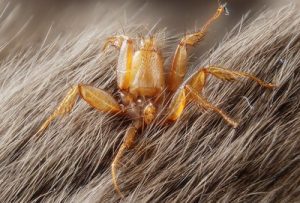
Blood-feeding insects such mosquitoes, midges and tabanid flies (Diptera) (aka horse flies, deer flies or march flies) are generally not placed in the ectoparasite category because they are free-living except for when they feed. The blood-feeding itself does not harm us; however, disease-producing organisms such as malaria and dengue are transmitted while feeding.
Detrimental and Beneficial Insects
Most people think of pests when they think of insects but, in fact, only a very small number of insect species are detrimental to humans. It has been estimated that only 5000 of the greater than 1 million species of insects are harmful to crops, livestock or people (Van Lenteren, 2006). However, this small number of species can have huge health or economic impacts.
We define what is or is not a pest relative to what we value. Agricultural pests are organisms that reduce quality or yield of crops or other products. Urban pests are organisms that are objectionable or unwanted in an urban environment. Medical pests carry human diseases or cause discomfort. Veterinary pests affect domesticated animals.
It is arguable that the majority of insects are beneficial because they perform ecosystem services. For example, insect predators control populations of insect species that would otherwise become pests. The beneficial insects that are most widely recognised are those that help destroy pest insects within cropping systems. Spiders, predatory insects in crops and parasitoids are all examples of beneficial insects. Some insects are prized and valuable because of their beauty, for example, some butterflies are protected to prevent extinction from over-collection.
Some insects produce valuable products. Shellac, a varnish, is derived from the secretions of a scale insect, called the lac insect. Bees produce honey. In some parts of the world insects are prized as gourmet food. Dung beetles from Africa were successfully introduced into Australia to break down the accumulations of bovine dung that were swamping pastures. Native dung beetles were adapted to feed on marsupial dung, which has different characteristics so they weren’t able to utilise cattle dung.

| Type of Beneficial Insect | Effect | Example |
|---|---|---|
| Predators & parasitoids | Biological control of pest insects | Wasp parasitising moth eggs(G&C p.419/p.389) |
| Weed-feeding insects | Biological control of weeds | Cactoblastis moth larva controls prickly pear cactus.
Cyrtobagous weevil control water weed, salvinia (G&C Box 2.2/10.3) |
| Pollinators | Pollinate crops and plants | Mostly bees, many other insects as well e.g. flies, beetles, wasps |
| Producers of products useful to people | Provide food and materials used in industry | Honey, shellac, silk, many dyes. |
| Scavengers & decomposers | Major contribution to recycling organic matter | Blowflies help decompose carcasses; dung beetles remove animal dung from pastures. Maggots in medical treatment (biotherapy). |
| Research | Insects used for genetics, population modelling, etc. | Drosophila flies are the foundation organisms of genetics |
| Tourism | Economic benefits of tourism | Glow-worms in Australian and New Zealand caves |
| Type of Pest Insect | Effect | Example |
|---|---|---|
| Agricultural Pests | Directly feeding on cultivated plants | Helicoverpa moths in cotton and horticultural crop.
Fruitflies in many fresh fruits and vegetables |
| Medical and Veterinary Pests | Vectors of human diseases | Plague – flea
Typhus – lice African sleeping sickness – tsetse fly River blindness Onchocerciasis] – black flies Malaria, yellow fever, encephalitis, elephantiasis, Ross River fever, dengue – mosquitoes |
| Urban pests | Structures | Termites, borers |
| Transmit plant diseases | Planthopper transmits Fiji leafgall of sugarcane | |
| Need to use pesticides for control | Enormous cost to manufacture and purchase
Impact on the environment |
|
| Vectors of animal diseases | Blue tongue – biting midges
Dog heartworm – mosquitoes |
|
| Nuisance insects | Biting midges, blackflies, bushflies, mosquitoes, | |
| Stings and bites | Bees, wasps, ants, biting midges, mosquitoes | |
| Clothing, carpets, paper | Clothes moths, carpet beetles, silverfish | |
| Stored food products | Beetles, cockroaches, moth larvae |
Topic Review
Do you know…?
- the reasons insects for high insect diversity
- how to describe at least four types of feeding habits
- some examples of beneficial and detrimental insects

